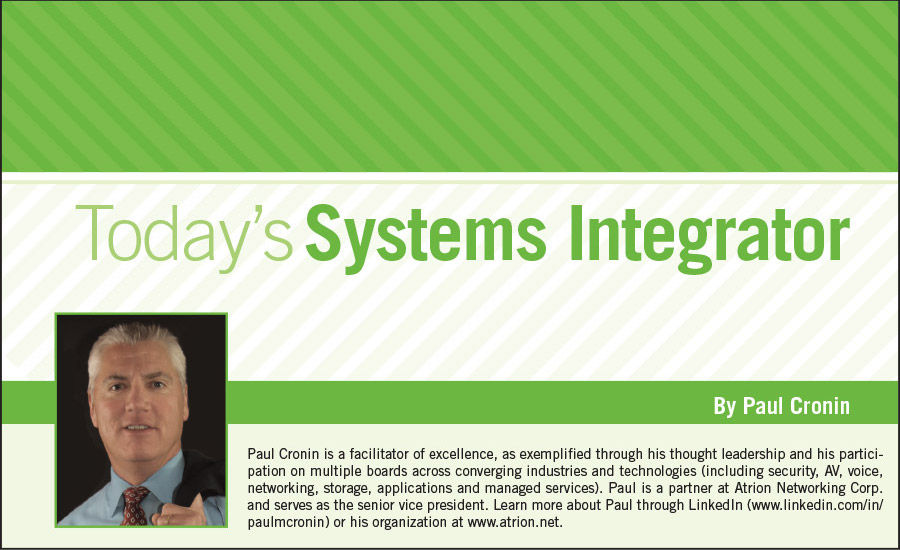The evolving world of high technology and the driving focus to a converged application-driven business environment has presented great challenges for solution providers and the clients they serve. What once was clearly defined as separate market segments, products and services is now a blurred line that requires solution providers to think differently as they prepare to take on the challenges of being more than what they are prepared to be.
To illustrate, consider a new unified communication (non vendor-specific) platform aimed at providing a client a technology solution that provides traditional voice functionality, email integration, video integration, remote access, server virtualization, and so on. In the past this would have been implemented as individual pieces by different providers engaged and managed by the client. Today’s all-in-a-box type vendor solutions, however, require the solution provider have the advance skills critical to providing the lifecycle services around it. No one can be the best at everything and clients understand this, but still expect it. So how does the solution provider help its client accelerate business using technology while minimizing risk?
The obvious answer today is for a solution provider to create partnerships with other solution providers so as to leverage their complementary strengths in a way that, when combined, they meet the client’s requirements. But this sounds a lot easier then it is, and in a world where competition is tough, talent is tight and client relationships are closely guarded strategic partnerships, a more collaborative approach is needed to generate success.
To do it right, creating partnerships through a collaborative approach means you need to give to get. This requires partners who are willing to invest personal face-to-face time throughout the entire relationship, at multiple organizational levels. This is the only way to create trusted relationships.
This further requires an investment in time to build basic understanding between each partner’s teams so that clients see a synergy in the way they operate and function as one. To the client, the “one-neck-to-choke” approach offers the same level of ownership and commitment to client satisfaction no matter who the major player is.
In addition, many companies make the mistake of stopping the partnering process at the point of becoming a service delivery partner, which means they unfortunately miss out on the extraordinary benefits of true collaborative innovation, i.e., sharing best practices and go-to-market strategies and brain-storming around developing strategies for accelerating business growth. This type of collaboration actually tightens the partnership itself and often becomes the catalyst for moving it from a strategic partnership to more of an alliance. This enables both businesses to interoperate with equal benefits for significant value. At this level of strategic collaboration partners often move past guarding their client relationships to sharing clients with their trusted partners. They conduct educational events and they market each other to their clients as an extended arm of themselves.
But despite such advantages, what do clients themselves think about collaborative partnerships? My experience has been that clients quickly come to know the people at each company, trusting their relationship “owners.” They appreciate that the solution provider has invested significant time in knowing their business and in helping them become truly successful.
I have witnessed IT solution providers working with physical security and audio video solution providers and seen success for all the stakeholders involved. I have seen similar solution providers working with managed service providers (MSP) to build a recurring revenue model without the investment to operate it themselves.
In the end, much opportunity exists for those who want to surround themselves with collaborative partners who share their passions. The business goal should be to build an entire ecosystem around all of your clients’ needs and leverage client relationships so that your firm becomes the go-to authority they will call for anything they need.
When that happens, you have truly become a “facilitator of excellence.”









